The stench of wildfire smoke burned our nostrils as we unbuckled our sweaty pack belts. We’d hiked only a handful of miles but before either of us spoke, my buddy Frank Schultz and I both knew we needed to stop here, atop this lichen-carpeted knob. We sat in the hot, stale air, searching for white sheep in the expanse of mountains we knew lay buried beneath the haze. We could see frustratingly little and decided to stay put for the day. It was a hard decision, but it would be foolish to press on without seeing what the smoke might be hiding.
I have been hunting Dall sheep in Alaska for the last 20 years — the last 10 of those with my hunting partner, Frank. We’ve traversed rocky ridges through blizzards, forded waist-deep glacial streams, and hiked hundreds of miles in pursuit of those white rams. We’ve feasted on sheep meat cooked over willow fires and, other times, starved for days. On the first evening of this particular hunt we sat over our freeze-dried dinners, the cherry-red sun falling below the peaks around us. Tomorrow was opening day.
I’ve spent many opening-day-eves atop ridges or beside rocky streams. I’ve eaten the same meal while listening to the wind-driven rain battering my tent. The most miserable experiences always seem the most memorable. While enjoying a rare pleasant evening on our latest hunt, I pondered the future of this pursuit to which I’ve devoted so much over the years — a future that is less than certain.
Tough Decisions
A zipper broke the silence of opening morning. The first day of sheep season always brings an urgency to get the tent open and glass. Immediately we spotted a single ram, only about 800 yards away on the mountain above our tent. With the spotting scope peeking through the tent’s narrow opening, we saw that the ram was 8 years old and barely full-curl on one horn. He was legal, but only just, and appeared to be alone.
“I’m not shooting that ram on the first day,” I told Frank. He agreed.
It’s not an easy decision to walk away from a legal sheep. It had been three years since either of us had taken a ram. Last year, we chose to pass the one legal ram we found and came home empty-handed. We had made the right decision, and felt it was the right one on this hunt. We didn’t come all this way to shoot the first legal ram we saw. Instead, we packed our gear for a day of exploring a steep canyon.
Sheep hunting has always been hard, but a pair of tough winters that coincided with poor lambing years a decade ago have caused Alaska’s Dall sheep numbers to plummet — seemingly overnight. These conditions have made an already difficult pursuit harder and could jeopardize the very future of the DIY sheep hunter in Alaska.
As I picked my way up the bottom of the narrow canyon, I wondered, Will my kids be able to see these same basins, hoping to find a ram of their own? Midday, I brushed aside the bones of a Dall lamb that didn’t make it; the tiny scapula fit in my hand. We had hiked a few miles up the canyon, peeking into obscured cuts. We would wait until evening to work our way down to camp, when the sheep should be up and feeding. The escarpment seemed a barren moonscape, but both of us know that rams can appear suddenly and disappear just as quickly. The smoke had almost cleared, but our trek only turned up the one ram we’d already passed.
The End of a Golden Era
I might not have the utopian version of Alaska my grandpa enjoyed at my fingertips, but I’m grateful to trek into the mountains in pursuit of a mature ram — whether I get him or not. Recently I was chatting with legendary Fairbanks resident Chuck Gray, who hunted sheep and guided sheep hunters in Alaska beginning in the early 1950s. Gray knew former OL contributor Jim Rearden, as well as Frank Glaser — the famous market hunter and predator control agent Rearden wrote about. As he explained how things were back then, I felt as if he was wrestling to describe a completely different world than the one that exists today. What DIY sheep hunting looks like for the up-and-coming generation is anyone’s guess. Extrapolate another 50 years and I start to worry my grandkids won’t have the opportunity to hunt sheep at all.
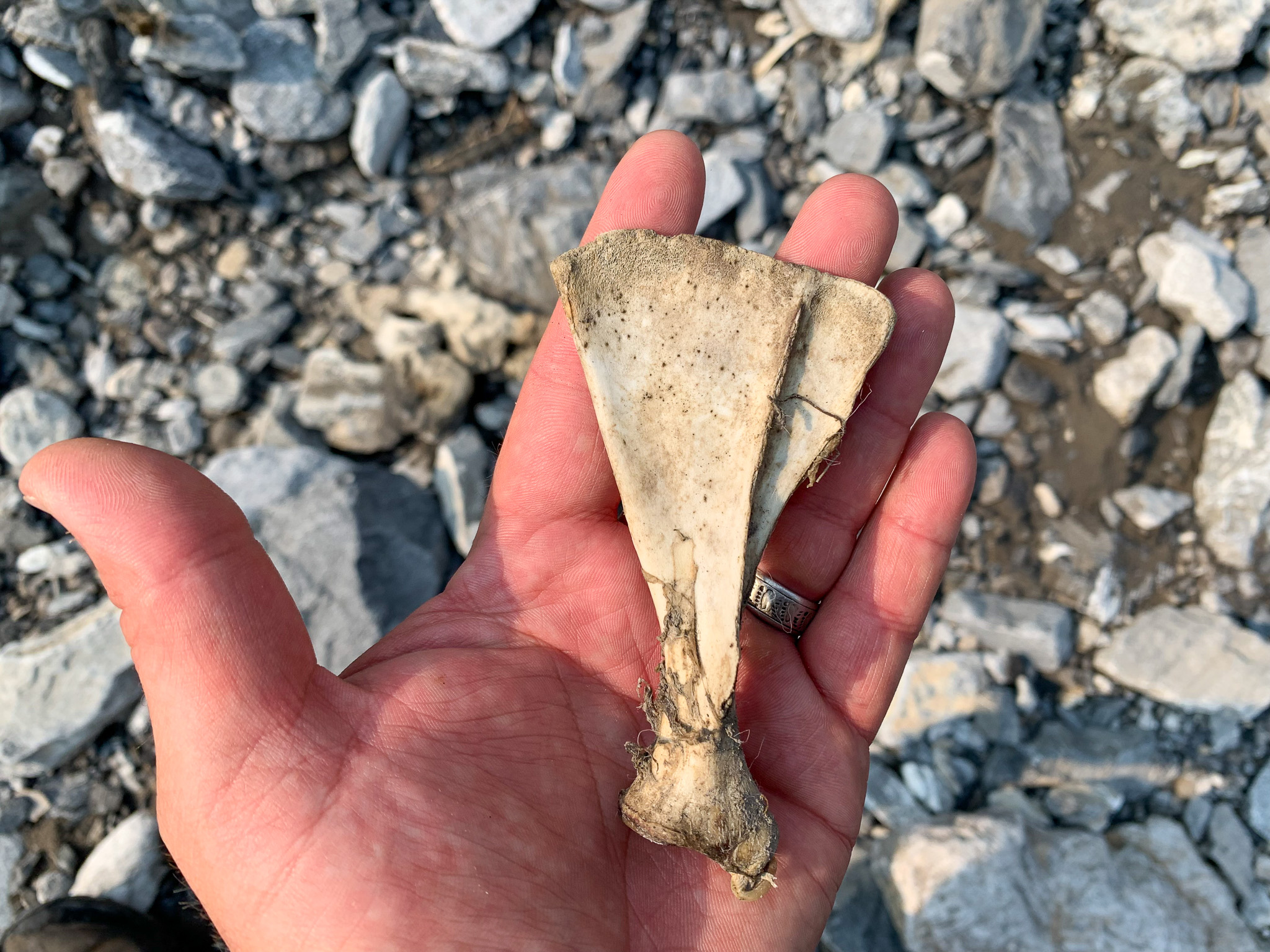
Alaska’s current sheep population is on its heels and things look grim. Biologists point out, though, that this population crash is entirely weather-related and, under the current full-curl management strategy that targets mature rams only, populations will recover. It’s going to be a slow process though, and sheep hunting opportunities in Alaska remain uncertain at best. With the low populations as a pretense, federal agencies have been closing vast portions of federal public lands to sheep hunters — even areas with very little hunting pressure or harvest. One area was closed without warning in 2023, mere days before the season began. This move has been viewed with great skepticism by many hunters and wildlife organizations like the Wild Sheep Foundation, and is strongly opposed by the State of Alaska’s wildlife managers. In another controversial move, the Alaska State Board of Game closed the popular western Alaska Range (Game Unit 19C) to non-resident hunters. In truth, public access and sheep hunting opportunities in Alaska have been eroded greatly since the passage of the Alaska National Interest Lands Conservation Act (ANILCA), and are only scattered remnants of what they were before statehood. Many hunters worry that these hunting opportunities, once restricted, won’t ever come back.
Alaska has seen great crashes of sheep populations before, and the current trend is also present in areas where hunting is not permitted, like Denali National Park. My fear is that the human desire to push buttons to find an instant fix will further diminish the opportunities we sheep hunters still have. Fewer than 1,500 people (residents and nonresidents combined) reported hunting sheep in Alaska in 2023, a number that’s been steadily declining since the 1980s. The statewide harvest in 2023 is the lowest since ADF&G started keeping track, at only about 350 rams harvested. This compares to an average of about 800 to 1,000 rams per year only a few years ago. That number doesn’t tell the whole story, though. Both sheep hunter numbers and areas they hunt have been greatly reduced, too.
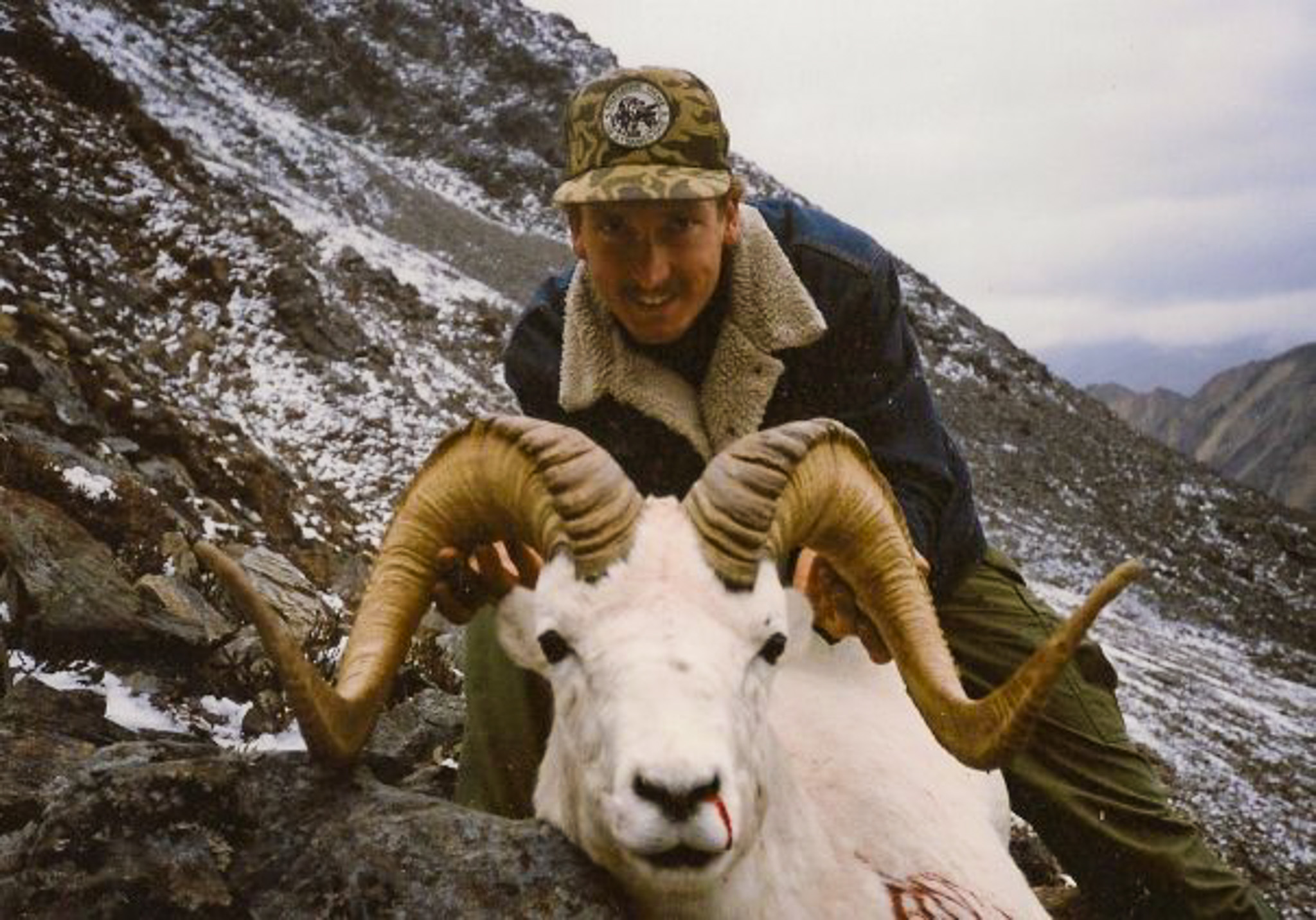
I’m confident that sheep populations will eventually recover, even if we do nothing to intervene. Perhaps there are measures that could help that recovery happen faster, but there is no instant fix. A key point is that hunting and hunting pressure aren’t impacting sheep numbers on a statewide scale. The threat facing sheep hunters isn’t the disappearance of sheep, but our ability to hunt them.
Win Some, Lose Some
The next morning we quickly scanned the mountains for the sheep that should be enjoying their morning feed. As we ate breakfast, I spotted a band of 30 about 7 miles away. As quickly as they appeared, they were gone again. But we’d planned to hunt in that direction anyway. We enjoyed a sunny, though uneventful, day and our feet were ready for a rest after a 15-mile round-trip trek. Our camp overlooked a drainage with one more canyon we could check, but Frank and I decided to hunt another place the next day. We simply weren’t seeing enough sheep or sheep sign.
Guided or unguided, sheep hunting is tough work. For us, that’s part of the allure. The experience of hunting wild lands where humans are only visitors has drawn sheep hunters to the mountains for ages. As a DIY sheep hunter, I’ve found that the mental challenge of sheep hunting rivals the physical demands. Each decision a sheep hunter makes is important, and it’s easy to question whether you’ve made the right one. (Should I use a day or two to hunt this last canyon, or take my chances elsewhere?) Gear can be bought, and with practice, the steep mountains and blustery alpine storms become details to be dealt with. But every decision you make charts new territory, and a chance at both success and failure.
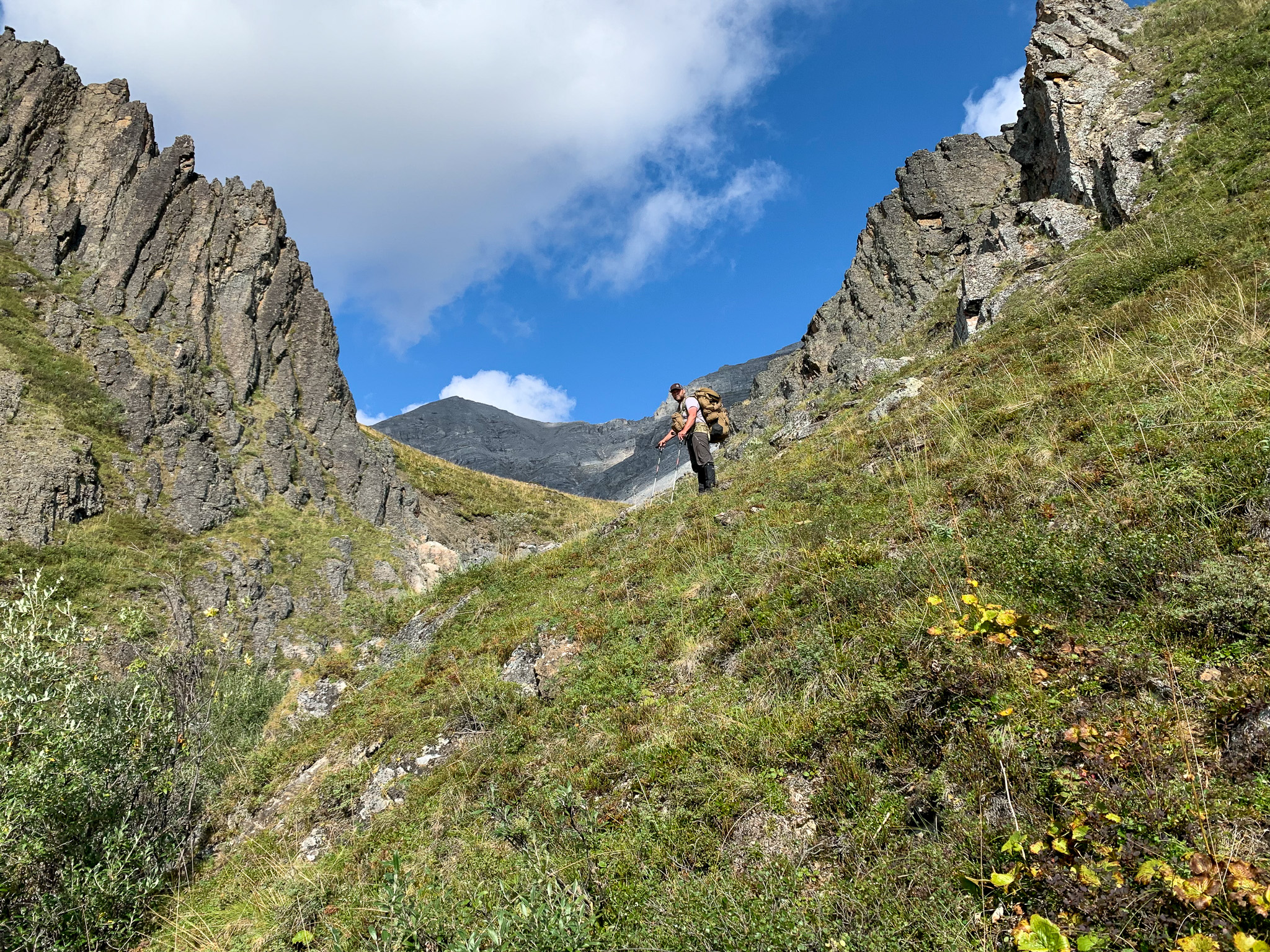
Our decision to pull stakes and focus elsewhere seemed like the right one as we spent the afternoon tucked below a windy saddle, glassing a jagged canyon in front of us. We watched a lone ram resting in the sunshine, then another feeding, then another crossing the rimrock, his outward-spilling horns displayed against the blue sky.
Frank and I work well together in the field. We share a similar approach to hunting, we know what to expect from each other, and there’s no bullshit. It’s damn tough to find a good sheep hunting partner. A bad one will doom your hunt before you ever lace your boots. Frank and I are also competitive. We hunt as a team, but we each hope to bring home a ram. To be fair, whoever spots a ram first has the choice to take it or pass. When one of us unzips his sleeping bag in the morning, the other quickly follows suit and the binoculars come out immediately. It was no different the following morning when I flung open our rain fly to hopefully snatch up a good ram before Frank could get to his binos. I beat him, but only saw what looked to be some ewes on a low slope where they’d fed the night before.
Oh well, I thought, tucking my binoculars back in their pouch. Coffee time.
“Oh shit, those are definitely rams,” Frank said, surprised, as I clicked the igniter on my stove. He was looking at the same group of sheep I’d just dismissed as being all ewes — a mistake I’ve made twice before on previous hunts and should have learned from. Ewes don’t smash their heads together though, and as Frank swept his binos over the group, he saw two rams collide.
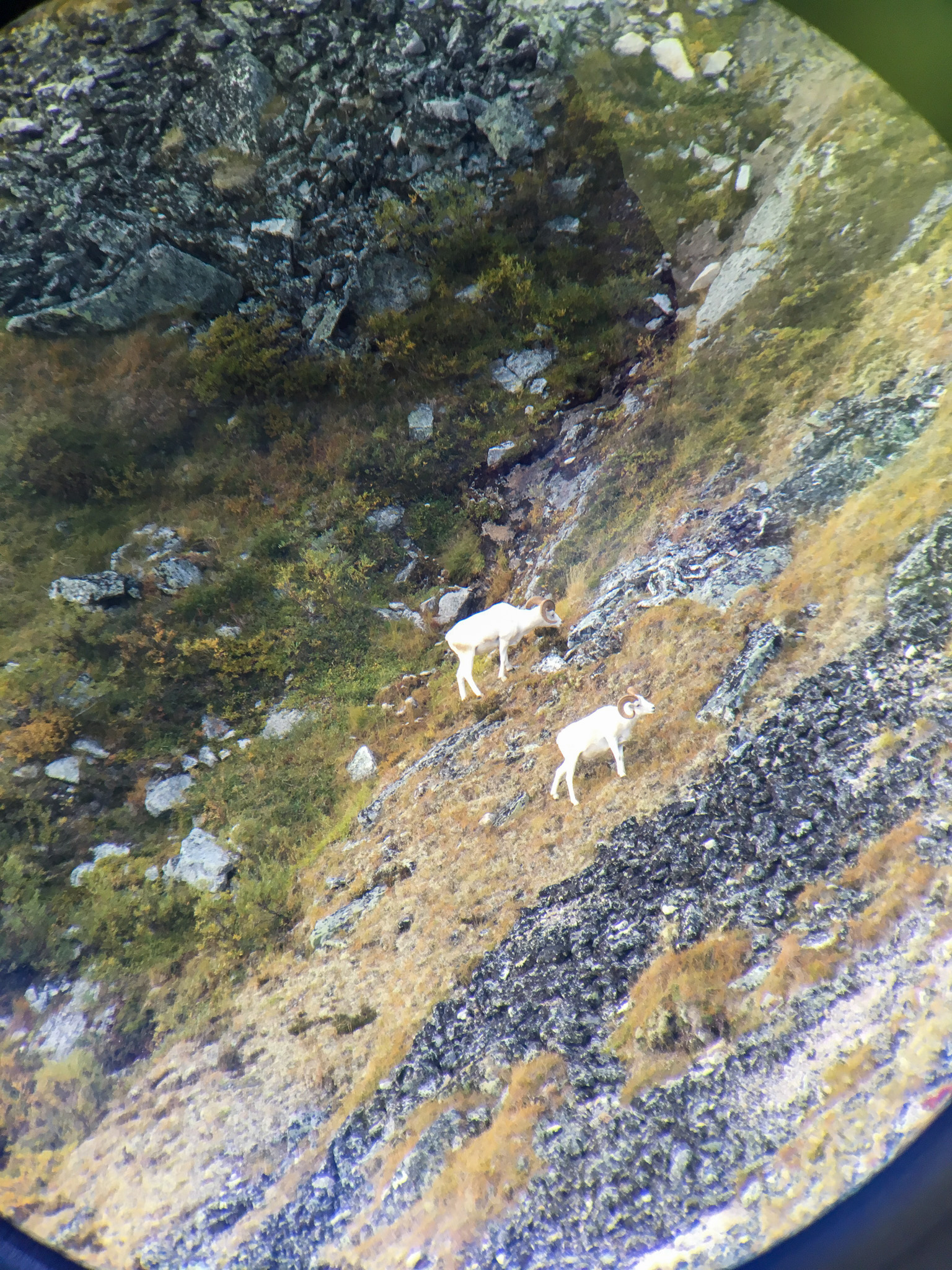
“Oh my God, look at that,” he said as he focused our spotting scope on them a few moments later. “Get over here quick.”
A few younger rams were milling above some ewes, but at the edge of the spotting scope was a partially-obscured ram. He was bedded facing away from us. All we could see was the back of his left horn, but that’s all we needed to see. Dark and heavy, the horn tip was plainly visible twisting up and spiraling out to the side. This ram was a shooter.
“Well, time to get moving. The only question is, what do we do with camp?” I wondered aloud as we wolfed down breakfast. “Do we want to leave it here, pack it to the bottom of the drainage and ditch it, or carry everything with us on the stalk?”
It was another tough decision. Frank and I would be able to move more quickly without the extra weight of our camp and food. But we could blow the stalk and have to return for it. We already intended to hunt in that direction, and if the rams moved farther away, we could find ourselves miles from our stuff. We decided that our best option would be to take camp with us and deal with the extra weight.
A Matter of Time
“Twenty minutes,” I said as we filled our water bottles from a glass-clear creek, noting how much time had passed since we last had eyes on the rams.
The rams had been bedded when we left them, but would eventually get up for a mid-morning feed. Nearly every stalk requires you to approach the sheep so they can’t see you. If everything works as planned, you might not see them again until you’re in range. It’s a necessary but stressful gamble.
“Forty-five minutes,” I chimed as we stopped to catch our breath while climbing a long draw.
The rams had been feeding low on a point that stuck out from their mountain. We needed to get above them in elevation, and between the sheep and their rocky escape cover on the mountain above. If they decided to move too high too soon, our stalk would be for nothing. So Frank and I pushed upward in short bursts, stopping only long enough to catch our breath. At last we could slow our pace as we neared the top. This is where we needed to start being careful.
“This is the part I hate,” Frank whispered, a mixture of excitement and doubt on his face.
The most stressful part of a stalk on mountain sheep is the end, when you hope to relocate the ram at any moment but haven’t yet spotted it. We had climbed into a small saddle that we hoped put us between the rams and their escape route. We’d kept a watchful eye for sheep walking back up the mountain and seen nothing.
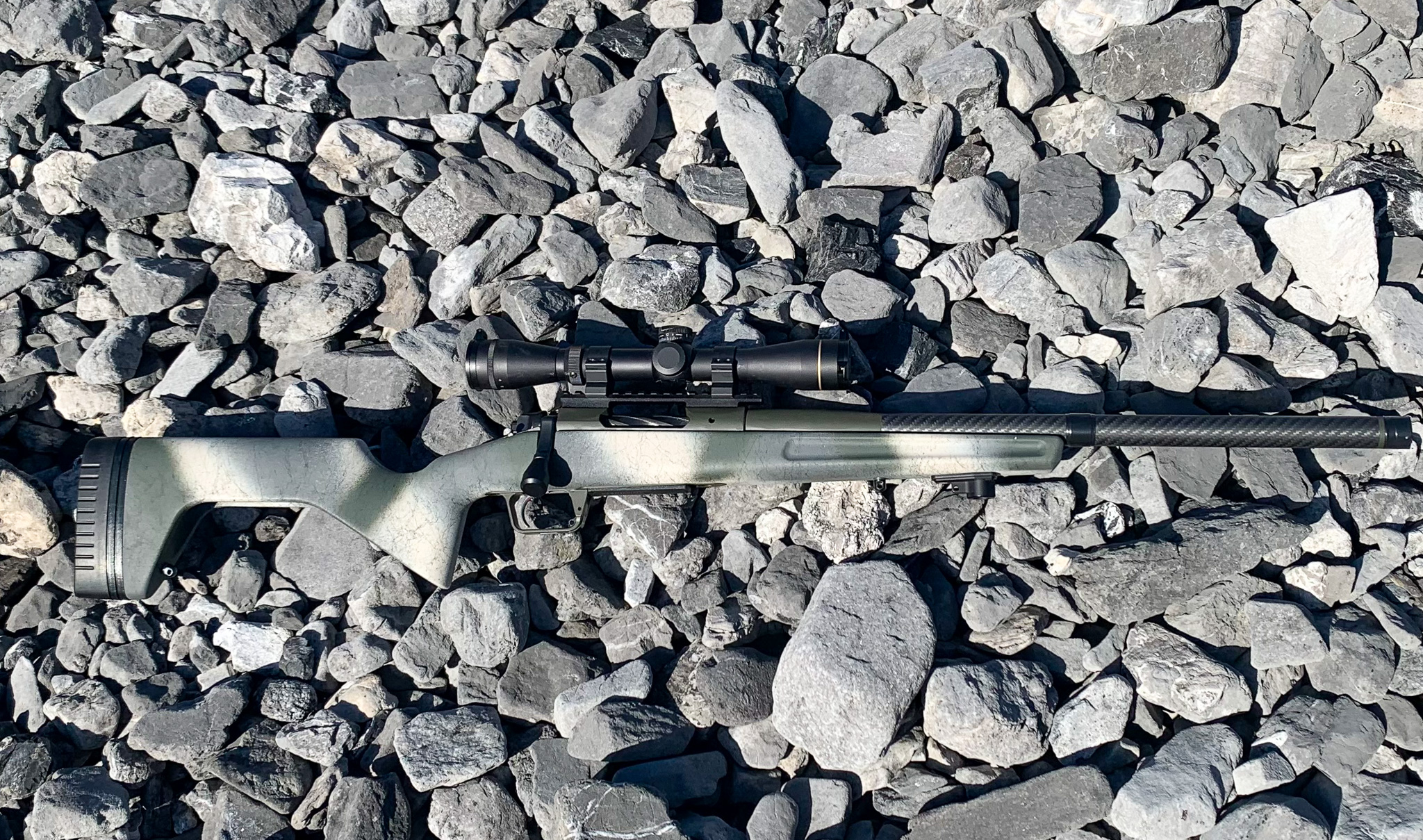
Frank and I inched forward, creeping around the steep hillside until the grassy slopes below came into view. Empty. Our angst grew as more of the ground below us came into view. Where could they have gone? Had packing and carrying all that heavy shit slowed us down too much? No, we had made good time. They had to be there.
Surely the sheep had fed around the bottom of the hill, away from us. We turned straight up the steep slope, crawling on hands and knees over rocks and ledges, our rifle butts sinking into the crumbling dirt. At last we paused just below the top. Frank peeked over the knife-edge crest of the ridge, then turned and slumped onto his rear, the stress melting from his face in an instant.
“They’re all right there, bedded,” he whispered. “No idea we’re here.”
I crawled up to peek over the edge and sure enough, the rams were below us, bedded in the shade cast by the 100-foot cliff we were now perched atop. We quickly set up the spotting scope and confirmed that the ram Frank had seen two hours earlier was indeed a beautiful specimen. Among the group, there was another heavy-horned, mature ram — the one we’d seen skylined the evening before.
Frank and I spread out to find suitable shooting positions. I removed the lid of my backpack and laid it on the edge of the cliff to cushion my rifle. The angle of the 300-yard shot was too steep for a bipod.
We had doubled on rams before and knew they wouldn’t immediately run at the sounds of a gunshot. Unlike deer, a group of mountain sheep is slow to flee when one of their group goes down. I’d have plenty of time to make a controlled, precise shot.
“I’ll watch mine and you shoot when you’re ready,” I told Frank as we settled in behind our rifles.
The Long Game
In my 20 years of hunting Dall sheep in Alaska, I’ve learned many things. One is that every sheep hunt has two stages: the mind game and the work. While the crack of a rifle is a small part of the hunting experience, it marks an instantaneous and euphoria-triggering change in the hunt. All of your decisions, hunches, and best guesses got you to this point, behind the rifle. The moments before and immediately after you shoot a ram are surreal. What first seemed an insurmountable task a day, week, or month ago is now flesh and blood, right in front of you.
Often, your decisions lead you to a more disappointing and frustrating place than this one. The plan you knew was going to work leaves you exhausted, sitting on a rock with a heavy rain carrying your very soul off the cuffs of your sleeves with it. Sometimes the hillsides you expected to be teeming with sheep are somber and barren. You peek over this ridge, then the next, then the next, with ever-growing anticipation and stress, until you run out of places to look. When you take your first step towards home, the nearest ram might as well be a million miles away. You’re finished.
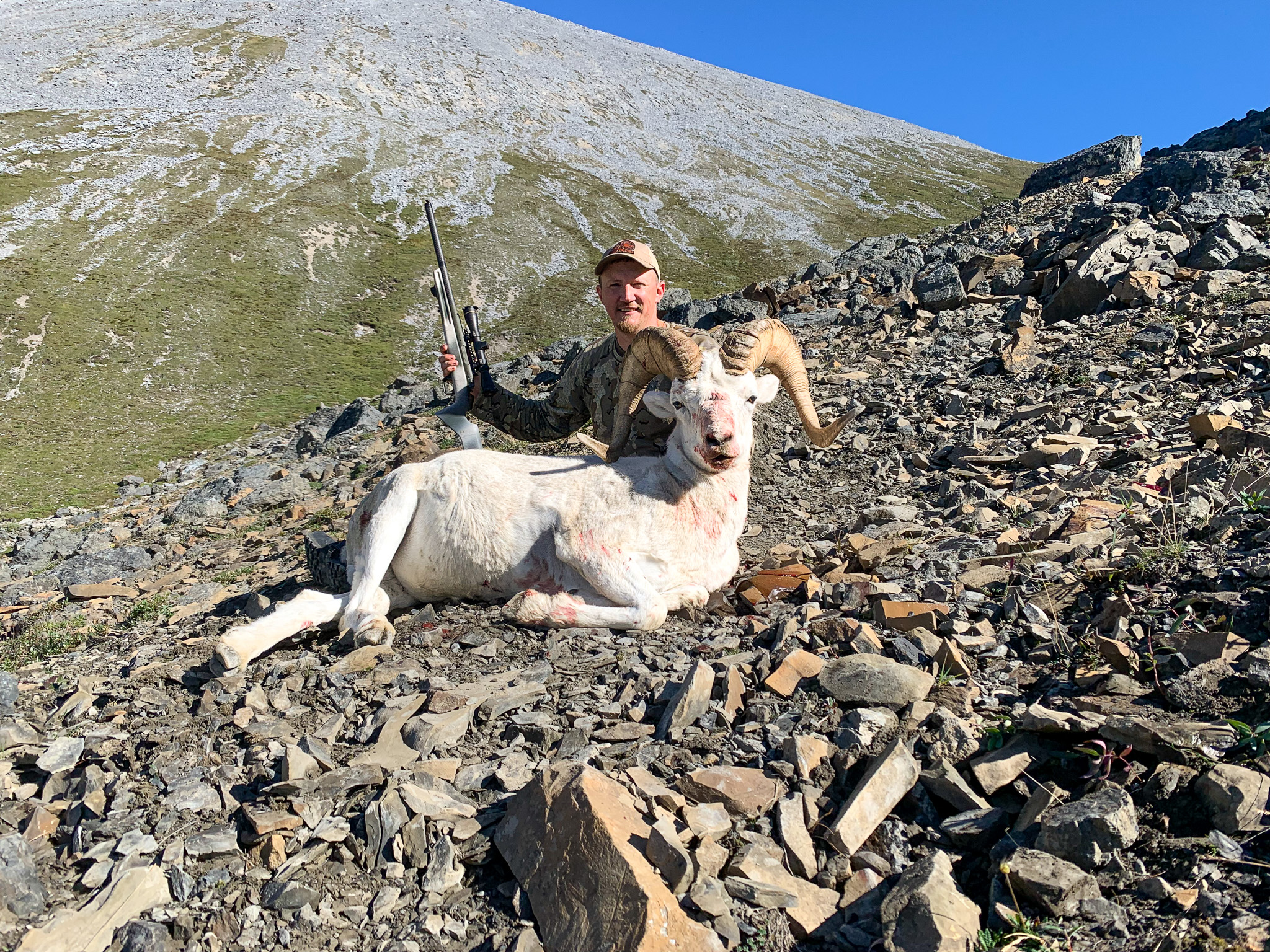

But when your rifle does finally crack, the weight that lifts from your shoulders means much more than simply killing an animal. A trophy ram is part of it, sure, but the relief of a well-placed shot is indescribable. And it’s just as powerful after 20 years as it was the first time. This more favorable end to the mentally taxing part of a sheep hunt means that a lot of work lies ahead, but now it’s easier to bear. You might have days of grueling hiking ahead, but that’s cake when you’re free of the mental strain. The last rams that Frank and I had taken, three years ago, we butchered in a torrential downpour. Water pooled on the steaming carcasses faster than I could skin them, and we stumbled back to camp at 2:00 a.m., soaked and happy.
This season, as Frank and I sat in the sun and admired our rams in their intact state, we greatly appreciated that circumstance, at least for now, allowed us to savor the moment.
